
Little Bohemia, or Bohemian Town, is a historic neighborhood in Omaha, Nebraska. Starting in the 1880s, Czech immigrants settled in this highly concentrated area, also called "Praha" (Prague) or "Bohemian Town", bounded by South 10th Street on the east, South 16th Street on the west, Pierce Street on the north, and Martha Street on the south, with a commercial area went along South 13th and South 14th Streets, centered on William Street. It was located south of downtown, and directly west of Little Italy. A portion of the neighborhood along South 13th Street was listed on the National Register of Historic Places in 2020.
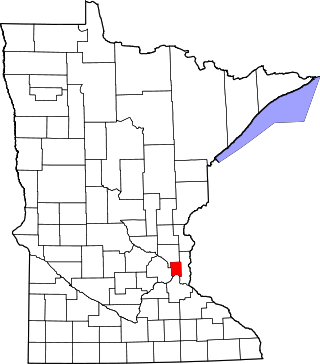
This is a complete list of National Register of Historic Places listings in Ramsey County, Minnesota. It is intended to be a complete list of the properties and districts on the National Register of Historic Places in Ramsey County, Minnesota, United States. The locations of National Register properties and districts for which the latitude and longitude coordinates are included below, may be seen in an online map.
The Czech-Slovak Protective Society (CSPS), which became the Czecho Slovakian Association, was an organization supporting the welfare of Czech and Slovak immigrants to the United States. The Czech-Slovak Protective Society started as an insurance services organization. It was once the largest Czech-American freethought fraternity in the United States.

The Bohemian Citizens' Benevolent Society is a private benevolent society founded in 1892 in Astoria, Queens, to support Czech and Slovak immigrants to the area, as well as people of Czech and Slovak ancestry. The society is commonly known as "Bohemian Hall" after its clubhouse, which is listed on the National Register of Historic Places.

This is a list of the National Register of Historic Places listings in Saint Louis County, Minnesota. It is intended to be a complete list of the properties and districts on the National Register of Historic Places in Saint Louis County, Minnesota, United States. The locations of National Register properties and districts for which the latitude and longitude coordinates are included below, may be seen in an online map.

This is a list of the National Register of Historic Places listings in Otter Tail County, Minnesota. It is intended to be a complete list of the properties and districts on the National Register of Historic Places in Otter Tail County, Minnesota, United States. The locations of National Register properties and districts for which the latitude and longitude coordinates are included below, may be seen in an online map.
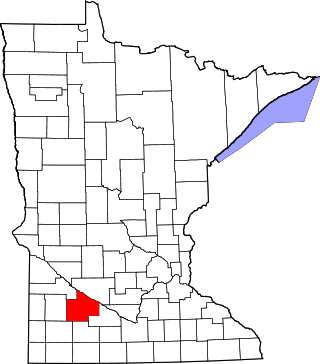
This is a list of the National Register of Historic Places listings in Redwood County, Minnesota. It is intended to be a complete list of the properties and districts on the National Register of Historic Places in Redwood County, Minnesota, United States. The locations of National Register properties and districts for which the latitude and longitude coordinates are included below, may be seen in an online map.

This is a list of the National Register of Historic Places listings in Winona County, Minnesota. It is intended to be a complete list of the properties and districts on the National Register of Historic Places in Winona County, Minnesota, United States. The locations of National Register properties and districts for which the latitude and longitude coordinates are included below, may be seen in an online map.
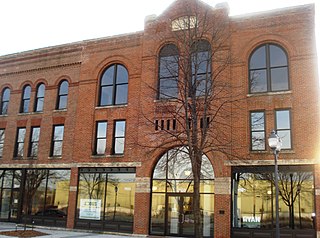
The C.S.P.S. Hall in Cedar Rapids, Iowa, USA was built during 1890-91 and expanded twice in the next two decades. It was a social and cultural center of the local Czech-Slovak Protective Society (C.S.P.S.). The building was individually listed on the National Register of Historic Places in 1978. In 2002 it was included as a contributing property in the Bohemian Commercial Historic District.

The Czecho Slovakian Association Hall, also known as Preucil School of Music, is a building in Iowa City, Iowa that was built in 1900, as a community center and meeting place for the Czechoslovakian Protective Society (C.S.P.S.), which later became the Czecho Slovakian Association. The C.S.P.S., like other fraternal organizations, began by offering a kind of insurance. The local chapter was organized in Iowa City in 1882. It served the Czech community that was concentrated in the north and northeast areas of the city. Like other C.S.P.S. halls, it hosted social, cultural, and educational activities, and this one also hosted gymnastics.

The ZCBJ Hall, also known as Community Hall, is a building in Haugen, Wisconsin, United States, that was built in 1910. It was listed on the National Register of Historic Places in 1985. It historically served as a meeting hall for the Czech community.

The ZCBJ Lodge No. 46, also known as Bohemian Hall, is an historic building located in Prague, Oklahoma that was built in 1917. It was listed on the National Register of Historic Places on March 8, 1984. The building historically served as a meeting hall for the Czech community, hosting a Zapadni Ceska Bratrska Jednota lodge that was the oldest Czech fraternal order in Oklahoma. The lodge was originally organized in 1891 as a branch of the Czech-Slovak Protective Society, but was incorporated into Zapadni Ceska Bratrska Jednota in 1897.

The Z. C. B. J. Hall, also known as Bohemian Hall or Zapadni Cesko Bratrske Jednota Hall, is an historic building located near Arthur, Wisconsin that was built in 1907. It was listed on the National Register of Historic Places on June 25, 1992. It historically served as a meeting hall for the Czech community.

The Western Fraternal Life Association, previously known as Zapadni Ceska Bratrska Jednota is a fraternal benefit society and financial services organization in the United States. The association has its roots in the Czechoslovak immigrant community of the 19th century. It was once the second largest Czech-American freethought fraternity in the United States.
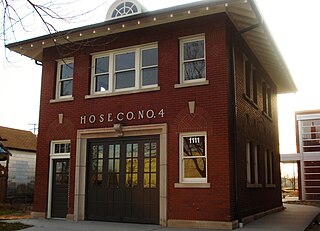
The Bohemian Commercial Historic District, also known as New Bohemia, is located in Cedar Rapids, Iowa, United States. It was listed on the National Register of Historic Places in 2002. At the time of its nomination it consisted of 75 resources, which included 48 contributing buildings, and 27 non-contributing buildings. Bohemian immigrants began settling in Cedar Rapids in the 1850s, and increasingly after the American Civil War in the 1860s and the Austro-Prussian War in 1866. They grew to be the largest ethnic group in the city, and the only one to settle in a distinct part of Cedar Rapids. They settled along the Cedar River between the downtown area and the T.M. Sinclair and Company meat packing plant. The buildings in the district were constructed between the 1880s and the 1930s. They are largely narrow-front commercial buildings and corner blocks. The buildings housed a variety of commercial establishments: a movie theater, two banks, and several filling stations. It also includes a railroad corridor factory building, a fire station, and fraternal halls. The buildings are representative of various commercial architectural styles and vernacular building forms popular at the times they were built. The Lesinger Block (1883) and the C.S.P.S. Hall (1891) are individually listed on the National Register of Historic Places.
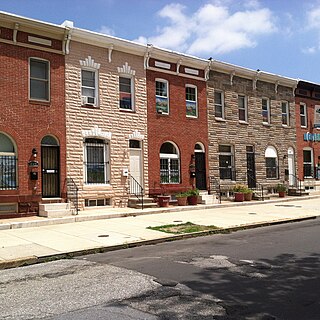
East Monument Historic District or Little Bohemia, is a national historic district in Baltimore, Maryland. It is a large residential area with a commercial strip along East Monument Street. It comprises approximately 88 whole and partial blocks. The residential area is composed primarily of rowhouses that were developed, beginning in the 1870s, as housing for Baltimore's growing Bohemian (Czech) immigrant community. During the late 19th and early 20th centuries the neighborhood was the heart of the Bohemian community in Baltimore. The Bohemian National Parish of the Roman Catholic Church, St. Wenceslaus, is located in the neighborhood. The historic district includes all of McElderry Park and Milton-Montford, most of Middle East and Madison-Eastend, and parts of Ellwood Park.

Lodge Zare Zapadu#44, known locally as Yellow Brick Hall and also known as Bohemian Brick Hall and Z.G.B.J. Council Hall #44, is a historic clubhouse of the Zapadni Ceska Bratrska Jednota serving the Czech-American community in rural Freeborn County, Minnesota, United States.
Lodge Boleslav Jablonsky No. 219 is the meeting hall of a Czech American fraternal society in Poplar Grove Township, Minnesota, United States. The hall was built in 1916 and remains in use as of 2016. It was listed on the National Register of Historic Places in 2002 for having local significance in the themes of European ethnic heritage and social history. It was nominated for being a representative of ethnic history in the last part of Minnesota to be settled by Euro-Americans.
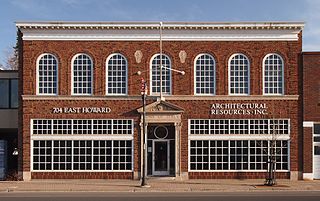
The Sons of Italy Hall is the former clubhouse of an Italian-American fraternal organization in Hibbing, Minnesota, United States. It was built in 1930 and stayed active until 1968. The hall was listed on the National Register of Historic Places in 1980 for its local significance in the theme of social history. It was nominated for reflecting the diversity of the Iron Range immigrant population and the unique way Hibbing's Italian community organized around clubs rather than churches.






















